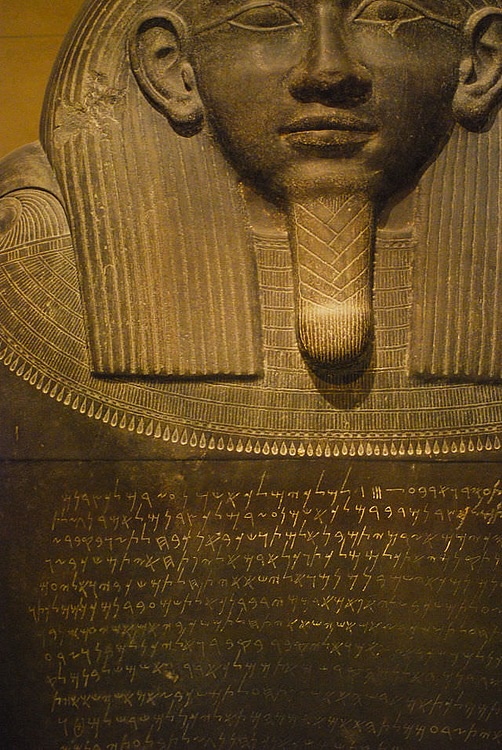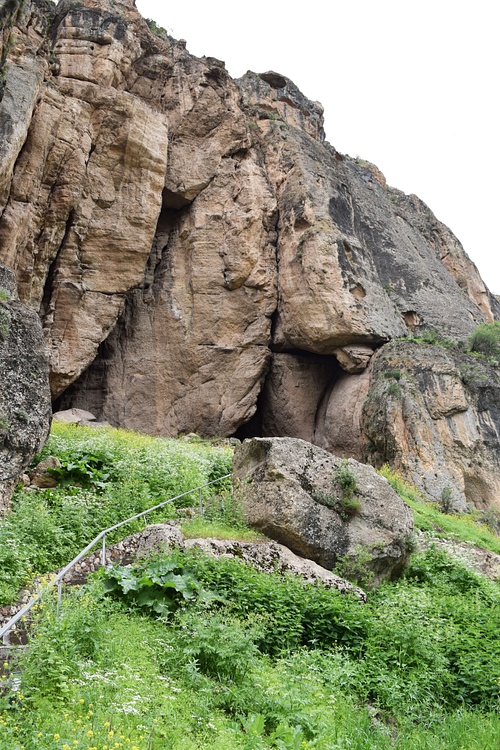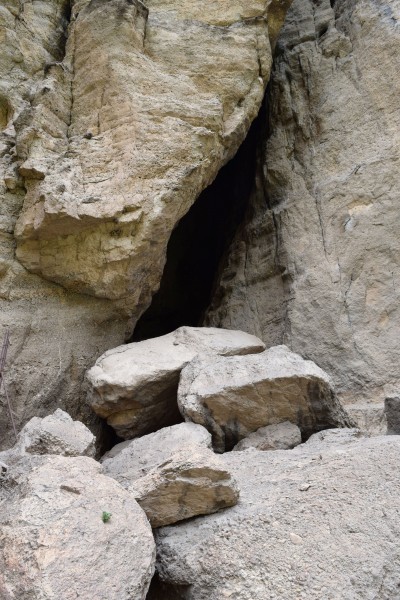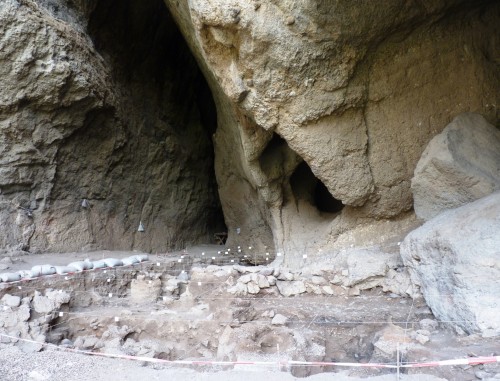Eshmunazar II › Areni Cave » Ancient origins
Articles and Definitions › Contents
- Eshmunazar II › Who Was
- Areni Cave › Antique Origins
Ancient civilizations › Historical and archaeological sites
Eshmunazar II › Who Was
Definition and Origins

Eshmunazar II (also Eshmunazor II ) was a king of the Phoenician city of Sidon during the Persian period. He was the third king of his family, after his his father and his grand-father. He was the son of Tabnit and Amashtart, and the grand-son of Eshmunazar I, the founder of the dynasty. He only lived 14 years and during his reign, he ruled the kingdom with his mother.Because he had no children, he was succeeded by his cousin Bodashtart. There is no confirmation about the exact dates of his reign, but the most possible date is around 525 BCE. The Persian king of this time was Cambyses, who waged war against Egypt with the help of Phoenician ships.
After Cambyses' victory, Egypt became part of the Persian empire and relations between the Persian king and the king of Sidon were good. The Frensh archaeologist Ernest Renan found Eshmunazor II's coffin in the south-east necropolis of Sidon (Maghart Tabloun necropolis) in 1855. The coffin was made from basalt that had been imported from Egypt (in fact it was taken off a tomb in the Egyptian capital Memphis, during the Persian occupation and shipped to Sidon). The Egyptian text was erased and a Phoenician text was written, which reads:
IT IS WE WHO HAVE BUILT THE TEMPLE OF THE GODS, AND THE TEMPLE OF ASTAROTH, ON THE SEASIDE SIDON
In the month of Bul, in the fourteenth year of the royalty of King ESHMUNAZAR, King of the Sidonians, son of King TABNIT, King of the Sidonians, King ESHMUNAZAR, King of the Sidonians, said as follows: I am carried away, the time of my non-existence has come, my spirit has disappeared, like the day, from whence I am silent, since which I became mute.And I am lying in this coffin, and in this tomb, in the place which I have built. O thou (reader) remember this: "May no royal race and no man open my funeral couch, and may they not seek after treasures, for no one has hidden treasures here, nor move the coffin out of my funeral couch, nor molest me in this funeral bed, by puttiiig another tomb over it. Whatever a man may tell thee, do not listen to him: For the punishment (of the violators) shall be : Every royal race and every man, who shall open the covering or this couch, or who shall carry away the coffin where I repose, or who shall molest me in this couch : they shall have no funeral couch with the Rephaïm, nor shall be buried in graves, nor shall there be any son or offspring to succeed to them, and the sacred gods shall inflict extirpation on them.Thou whoever (thou art who wilt) be King (hereafter), inspire those over whom thou wilt reign, that they may exterminate the members of the royal race (like those men) who will open the covering of this couch, or who will take away this coffin, and (exterminate) also the offspring of this royal race, or of these men of the crowd. There shall be to them no root below, nor fruit above, nor living form under the sun. For graced by the gods, I am carried away, the time of my non-existence has come, my spirit has disappeared, like the day, from whence I am silent, since which I became mute.

Temple of the Obelisks
For I, ESHUNAZAR, King of the Sidonians, son of King TABNIT, King of the Sidonians (who was), the grandson of King ESMUNAZAR, King of the Sidonians, And my mother AMASTARTE, the Priestess of ASTARTE, our mistress, the Queen, the daughter of King ESMUNAZAR, King of the Sidonians : It is we who have built the temple of the gods, and the temple of ASTAROTH, on the seaside Sidon, and have placed there the image of the ASTAROTH, as we are sanctifiers (of the gods). And it is we who have built the temple of ESHMUN, and the sanctuary of the purpleshells River on the mountaln, and have placed there his image, as we are sanctifiers (of the gods). And it is we who have built the temples of the gods of the Sidonians, in the seaside Sidon, tile temple of BAAL-SIDON and the temple of ASTARTE who bears the name of this BAAL. May in future the Lords of the Kings give us Dora and Japhia, the fertile corn-lands, which are in tile plain of Saron, and may they annex it to the boundary of the land, that it may belong to the Sidonians for ever.O thou, remember this: May no royal race and no man open my covering, nor deface (the inscriptions of) my covering, nor molest me in this funeral bed, nor carry away the coffin, where I repose. Otherwise, the sacred gods shall inflict extirpation on them and shall exterminate this royal race and this man of the crowd and their offspring for ever.
The inscription is probably one of the most famous Phoenician texts. Today, the coffin is on display in the Louvre Museum ( Paris ).
Areni Cave › Antique Origins
Definition and Origins

The Areni Cave is a multicomponent cave site with artifacts dating from the Chalcolithic to the Bronze Age. In Armenia, the Areni Cave complex is also known as "Birds' Cave" ("Trchuneri" in Armenian). Located near the town of Areni, which lies close to the Arpa River and the Gnishik River in Armenia's central Vayots Dzor Province, the caves are the site at which archaeologists have discovered what is likely the world's oldest winery, and ancient human brain, the remnants of a 5,000-year-old skirt made of straw, and the world's oldest leather shoe. The first discovery of artifacts took place in 1997 CE by Boris Gasparian. Successive excavations have continued since that time, and they will continue into the future. The Areni Cave complex is one of the few caves in the Caucasus that is classified as “karstic” with a thick sediment sequence.
PREHISTORY OF THE ARENI CAVES
Excavations of the Areni Cave lead archaeologists and scientists to believe that the caves were inhabited by people during the Late Chalcolithic period (c. 6000-3000 BCE). Archaeologists refer to these people as the “Kura Araxes archaeological culture,” and they inhabited sites scattered across the Caucasus, in what is present-day Armenia, Georgia, and Azerbaijan, as well as in portions of western Iran and eastern Turkey. Roughly contemporaneous with Pre-Dynastic and Early Dynastic Egypt, artifacts made by the Kura Araxes people have been found as far as Iraq, Syria, and Israel. This suggests that the Kura Araxes culture perhaps had wide-ranging cultural and economic importance; some archaeologists go further and believe that migrations might have occurred with Kura Araxes populations moving to the south and southwest.
THE PREHISTORIC KURA ARAXES PEOPLE SEEM TO HAVE USED PITS WITH LARGE CERAMIC POTS FOR GARBAGE DISPOSAL IN THE REAR OF THE CAVE.
Materials recovered from Areni Cave suggest that human activity in the cave occurred over a period of decades or centuries rather than over thousands of years from around the end of the 5th millennium BCE to the beginning of the 4th millennium BCE. Moreover, excavations at Areni Cave indicate the likelihood that there was a division of labor amongst the prehistoric Kura Araxes people and that this is reflected in how the cave was utilized. Scientists and archaeologists contend that the cave was divided into spaces for specific purposes: places of habitation; places of economic and material production; and places designated for ritual and burial rites. Archaeologists have uncovered seeds, walnuts, the remains of charcoal, a bone awl, and obsidian blade, countless ceramic remnants, bones of sheep, goats, and pigs, and several human teeth. The prehistoric Kura Araxes people seem to have used pits with large ceramic pots or vessels for garbage disposal in the rear of the cave.(Curiously, the bones of several children and babies have been found in these trash areas. It is unknown if they were considered “rubbish.”) Plant materials were also placed in ceramic vessels, but it remains uncertain whether they were used for ritual purposes or if they were refuse. Evidence of the scattered bones of animals with butchered marks suggests that Kura Araxes people consumed the meat of goats and sheep.

Armenia's Areni Cave
SPECIAL ARTIFACTS RECOVERED FROM ARENI CAVE
From 2007-2011 CE, archaeologists have unearthed what they believe is a 6,100-year-old winery in the Areni Cave. The following objects have been uncovered: basins that ancient people utilized for wine presses; storage vessels; bowls for the consumption of wine; several wine-making tools; fermentation vats; and the remnants of domesticated grape vines. This makes the Areni cave complex one of the oldest sites in the world containing some of the earliest evidence for an established viticulture. The dry conditions in the cave were well-suited for the production of wine. Radiocarbon testing on several potteryshards was dated to c. 4100-4000 BCE. Archaeologists and scientists believe that the ancient peoples who inhabited the Areni Cave might have used wine in some sort of ritual or mortuary practice. Excavations have shown that as many as 20 human burials are located beside the winemaking zone within the cave, and archaeologists have additionally found various drinking cups around the graves.

Excavations at the Areni Cave
Archaeologists discovered a 5,500-year-old leather shoe made of cowhide at the Areni Cave in 2010 CE. Dating from 3500 BCE, it is believed that the cold temperatures within the cave, in addition to sheep dung, kept the shoe in a remarkable state of preservation. (Curiously, the shoe was found stuffed with grass as well.) The shoe was likely tailor-made from a single strip of leather cut in half and later tanned separately. The leather shoe surprised archaeologists by its "modern" appearance. While not the oldest shoe in the world, it is the world's oldest leather shoe. Archaeologists and various scholars believe that the shoe was removed by ancient inhabitants of the cave during a ritual ceremony, which perhaps included wine. In 2010 CE, archaeologists discovered a straw-woven skirt dating to 3900 BCE, and in 2008 CE, they uncovered biological materials consistent with that of a human brain. This portion of human measured 10 cm (4 in) and was so well preserved that it retained visible signs of blood vessels.
This article was made possible with generous support from the National Association for Armenian Studies and Researchand the Knights of Vartan Fund for Armenian Studies.
LICENSE:
Article based on information obtained from these sources:with permission from the Website Ancient History Encyclopedia
Content is available under License Creative Commons: Attribution-NonCommercial-ShareAlike 3.0 Unported. CC-BY-NC-SA License